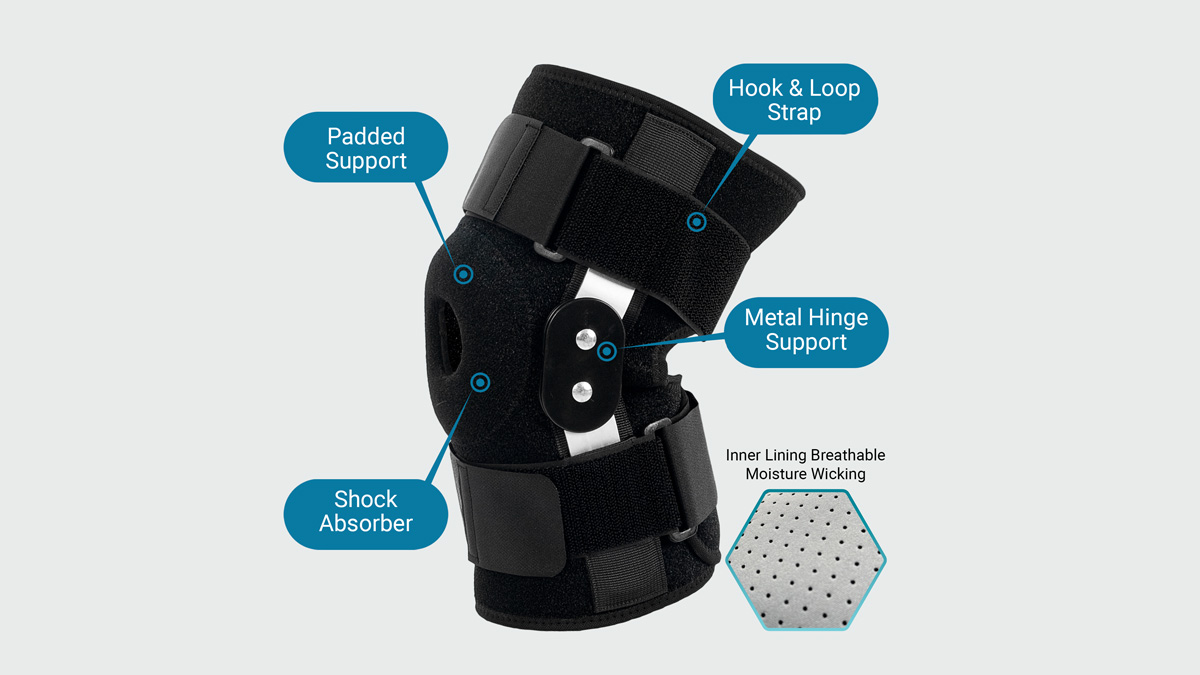A wrist support brace is a wearable device designed to provide support and protection to the wrist joint. It is typically made of elastic or neoprene material and fits snugly around the wrist. The brace works by compressing the wrist joint and limiting its range of motion, which helps to stabilize the joint and prevent excessive movement. By doing so, it can reduce the risk of overuse injuries such as carpal tunnel syndrome, as well as acute injuries such as sprains and fractures. Some wrist support braces also have additional features such as adjustable straps and pads for extra support and comfort.
Overall, a wrist support brace is an effective tool for injury prevention and can provide individuals with increased confidence and performance in physical activities. In this article, we will explore some of the key benefits of wearing a wrist support brace, and a detailed guide on how to choose the best wrist support braces according to your needs.
Provides Support
Wrist braces provide essential support to the wrist joint during physical activity, helping to stabilize it and prevent overuse injuries. By reducing strain on the wrist, they can also promote better biomechanics and reduce the risk of developing chronic conditions like carpal tunnel syndrome.
Reduces Pain
Wrist braces can be particularly effective at reducing pain associated with wrist injuries or conditions like tendinitis, arthritis, or carpal tunnel syndrome. The compression and support provided by the brace help to alleviate pressure on the wrist joint, reducing discomfort and promoting healing.
You Might Like this: Physical Exam & Testing in Knee Evaluation
Promotes Healing
Wearing a wrist brace can help promote healing by limiting the movement of the wrist and providing support to the affected area. This can reduce the risk of further injury and promote faster recovery times, allowing individuals to return to their normal activities more quickly.
Protects Against Re-injury
After sustaining a wrist injury, wearing a brace can help protect against re-injury by providing support and limiting movement. This can allow the injured wrist to fully heal before returning to normal activities, reducing the risk of further damage.
Improves Performance
Wrist braces can also enhance performance in physical activities by providing stability and support to the wrist joint. This can help individuals feel more confident and perform at their best, without worrying about wrist pain or discomfort.
Enhances Comfort
Many wrist braces are designed with additional features like adjustable straps and padding to enhance comfort and reduce irritation during prolonged use. This can make them more comfortable to wear for extended periods, allowing individuals to continue their daily activities without discomfort.
Prevents Joint Deformity
Certain conditions like rheumatoid arthritis can cause joint deformity in the wrists. Wrist braces can help prevent or slow down this process by providing support and preventing excessive movement in the joint.
Improves Sleep
Individuals with wrist pain or discomfort may find it difficult to sleep at night. Wearing a wrist brace can help alleviate pain and provide support to the joint, allowing for more restful sleep.
Increases Circulation
Wrist braces that are designed with compression can help increase blood flow and improve circulation in the wrist area. This can aid in the healing process and reduce swelling.
Reduces Inflammation
Inflammation is a common symptom of wrist injuries and conditions. Wearing a wrist brace can help reduce inflammation by providing support and compression to the affected area.
How to choose the right wrist support braces?
Here’s a detailed guide on how to choose the right wrist support braces according to your needs:
Determine the Type of Support Needed
Before purchasing a wrist support brace, it’s important to consider the type of support needed. If you’re looking for basic support for everyday activities, a simple neoprene or elastic brace may suffice. However, if you require more advanced support for a specific condition or injury, you may need a brace with additional features like metal stays or adjustable straps.
Consider the Material
The material of the wrist support brace can impact both comfort and durability. Neoprene and elastic materials are typically soft and flexible, providing good support and comfort. Meanwhile, more rigid materials like plastic or metal can provide additional support, but may be less comfortable for extended periods.
Choose the Right Size
Choosing the right size wrist support brace is essential for both comfort and effectiveness. Most braces are available in multiple sizes based on wrist circumference. Make sure to measure your wrist accurately and consult the sizing chart provided by the manufacturer before purchasing.
Look for Additional Features
Depending on your specific needs, there are a variety of additional features to consider when choosing a wrist support brace. Adjustable straps, for example, can provide a more customized fit and allow for greater adjustability as swelling changes. Moisture-wicking fabrics can help keep the skin dry and reduce irritation. Meanwhile, braces with added padding or gel inserts can enhance comfort during extended use.
Consider the Level of Compression
Some wrist support braces offer additional compression to help improve circulation and reduce swelling. This can be particularly helpful for conditions like tendinitis or arthritis. However, it’s important to make sure the level of compression is appropriate for your specific needs, as excessive compression can restrict blood flow and cause additional discomfort.
Consult with a Healthcare Professional
If you have a specific condition or injury, it’s important to consult with a healthcare professional before purchasing a wrist support brace. They can provide guidance on the type of support needed and recommend specific brands or models that may be most effective for your needs.
Conclusion
In conclusion, wrist support braces are an effective tool for preventing and managing wrist injuries and conditions. By providing support, reducing pain, and promoting healing, wrist support can help individuals of all ages and lifestyles maintain healthy and pain-free wrists. In addition, with a wide range of materials, sizes, and features available, it’s possible to find a wrist support brace that meets your specific needs and preferences. Whether you’re a competitive athlete or an office worker, incorporating wrist support into your daily routine can help improve your wrist health and prevent future injuries.
Remember to consult with a healthcare professional if you have a specific condition or injury, and always choose a wrist support brace that fits well, offers appropriate support and compression, and is comfortable for extended use. With the right wrist support, you can keep your wrists healthy and strong, and enjoy the benefits of pain-free movement for years to come.




